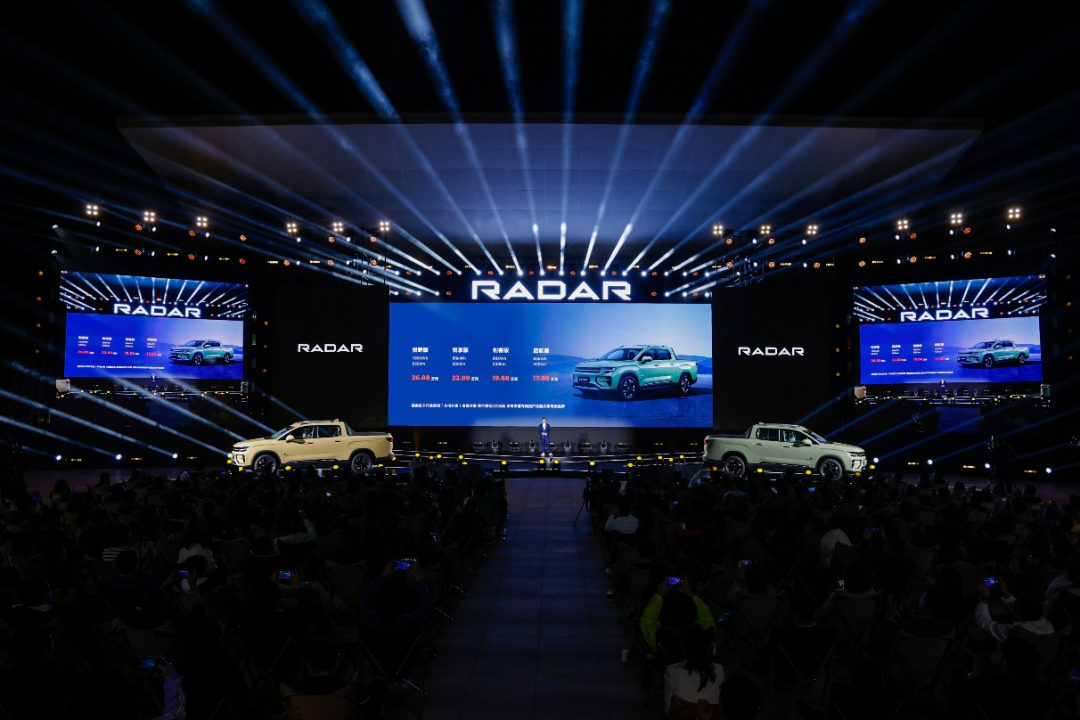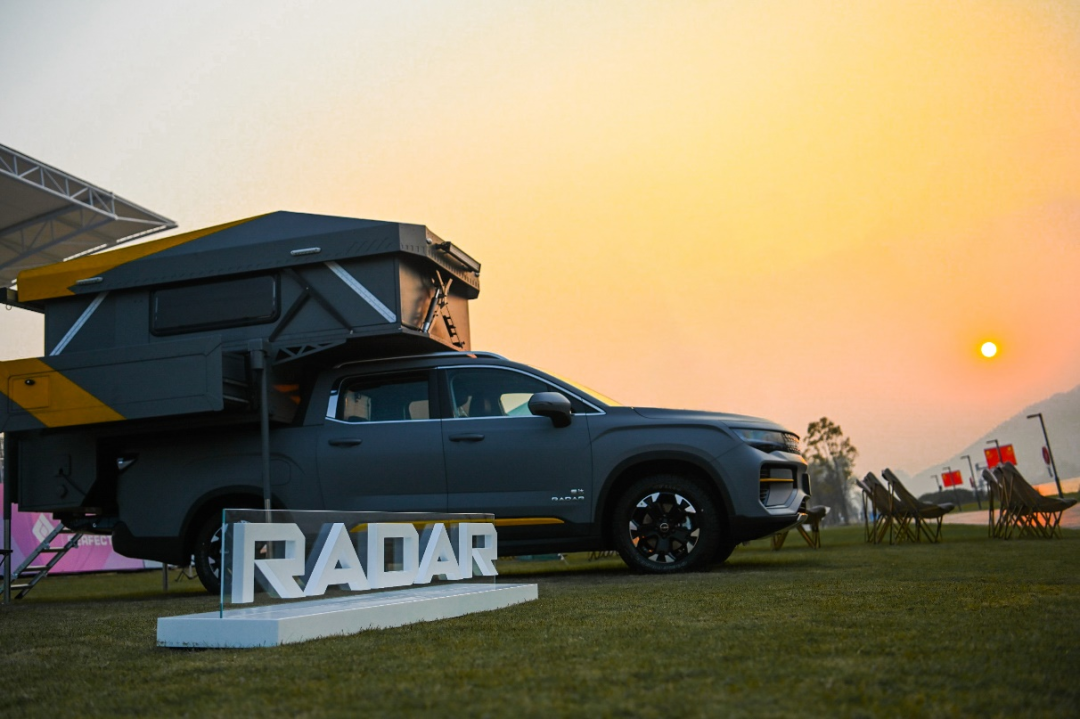Automotive Industry Translator
Many friends have recently been discussing the trend of electric and passenger-oriented pickups, similar to the SUV and MPV onslaughts of the past. It is believed that the offensive of new energy pickups may be forthcoming.
In 2022, in a series of policies to promote automobile consumption by the State Council, in addition to the comprehensive revitalization of passenger cars, pickups are also the focus of the policy. The State Council has issued three documents in succession calling for the lifting of the ban on pickups, especially after the release of the policy to “promote the lifting of restrictions on pickup trucks entering the city,” which drove the pickup industry into a new growth phase, especially new energy pickups.
After much anticipation, on November 9th, the first domestic pure electric platform pickup, the Radar RD6, was officially launched, with prices ranging from 1.788 million yuan to 2.688 million yuan. The strategic positioning, commercial model, and product strategy of the Radar brand are refreshing. Today, Old Li will talk with you about where the beacon of the “blue ocean” pickup market is, why it is said that the Radar has reshaped the industry, and why the road to Radar’s development is not smooth.
Where is the beacon of the “blue ocean” pickup market?
Old Li’s partners often discuss the fundamental commercial issues with everyone, such as what is the enterprise’s moat? Innovation; What is an excellent business model? Efficiency; What is a good product? Something users need. As a new brand, Radar meets the above.
Old Li has never believed that Radar is a pure pickup truck brand. The product definition given by Radar is “consumer-grade pickup trucks” or “mobile, diverse, and electrically-charged space.” Old Li’s partner’s answer is that Radar is not only a car brand but also represents a way of life.
Looking back at the development of the passenger car market in recent years, whether it is the SUV, MPV, or sub-market, the outbreak of each market has its fixed logic: first, the economic and social development drives users to have new needs, and then the phenomenal brand or product drives market development.
Over ten years ago, in 2009, China’s automobile market surpassed ten million in sales volume. With consumption and transportation upgrades, Chinese families urgently needed better space and stronger off-road vehicles, and SUVs stood out. Later, under the push of brands such as Great Wall Motors and Changan Automobile, the Haval series and CS series, among other products, stood out, driving the penetration rate of SUVs from a tiny spark to half of the country.
The pickup truck market today also presents similar opportunities. The US is the most mature market for pickups, with a penetration rate in the passenger vehicle field exceeding 15%, while China’s penetration rate for pickups is less than 3%, this is a stock market. From a medium- and long-term perspective, Old Li believes that the upper limit of domestic pickup truck market share is similar to that of MPVs, about 10%, which is an incremental market, and most companies cannot give up this sub-market.
Up to now, traditional pickup truck enterprises in China have been deepening their presence in the existing market, which mainly targets customers in the B-end industry, including: 1. service vehicles for specific industries, such as municipal service vehicles purchased by state-owned enterprises and government departments, such as public security, city management, State Grid, and telecommunications; 2. fixed area operating vehicles, such as those at airports, ports, and industrial parks; 3. C-end customers with a commercial purpose, which is an extremely “overlapping” market. Clearly, the future of the pickup truck industry does not lie here.

Where is the future of the pickup truck? In the C-end market.
Like SUVs and MPVs, the blue ocean attribute of pickup trucks lies in their ability to meet the needs of the new generation of users through diverse functions, and this market is blank. As Ling Shiqiang, CEO of RADA new energy vehicles, said in an interview, “Pickup trucks are a multi-functional and multi-scene product for outdoor use. The functions of pickup trucks currently available in the market are somewhat single. Firstly, we need to achieve multi-functionality and multi-scene functions. This is a platform concept, not a single attribute.”
In this innovative market, RADA wants to create products that are popular with the general public. Taking outdoor scenes as an example, Ling Shiqiang believes that energy and IoT are two very core features for improving the quality of outdoor living. How to achieve intelligence based on energy and how to achieve linkage with other facilities around the vehicle are crucial aspects of satisfying users’ needs through product innovation.
What has RADA reshaped?
Talking about this, Laoli thought of a head consulting company of MBB that helped a domestic car company formulate a pickup truck strategy in 2018. The conclusion was that the supply chain of engine, transmission, and chassis components of the enterprise had no advantages in the pickup truck field. It was suggested to abandon traditional pickup trucks and enter the electric pickup truck market. Interestingly, the top executives of the car company did not adopt this suggestion, which apparently was a relatively wrong decision.
Laoli would like to say that breaking the original idea and innovating business models is an extremely difficult thing for a traditional enterprise. The upper limit of the strategic driving force of a traditional enterprise is often to develop a pure electric pickup truck product, while RADA has created a brand new pure electric pickup truck brand. The different driving forces of the strategy have greatly changed the business models of the enterprise. Traditional enterprises are copying others by developing pure electric pickup trucks, while RADA is reshaping the industry, including several aspects:The first aspect is the product revamp. Radar is not limited by traditional thinking, but based on the new energy pickup truck itself to create a differentiated positioning and match corresponding product highlights, similar to how electric pickup trucks are positioned in North America. In simple terms, while the functionality of traditional pickup trucks remains primarily commercial, Radar’s product positioning is mainly for private use. To be frank, Radar’s products are more like a household pickup truck aimed at C-end users.

Taking the Radar RD6 as an example, as a high-end pure electric pickup truck, it actually combines the comfort of a sedan, the off-road capability of an SUV, the leisure of a travel car, the loading capacity of a light truck, and fully covers all-round use cases such as home use, off-road, travel, towing trailers, camping, fishing, and outdoor exploration.
The second aspect is the market revamp. As mentioned by Lao Li in the previous section, traditional pickup trucks have their fixed segmented products and users, and Radar has no advantage in this field. So from the beginning, Radar aimed at incremental market users, including the following types: The first type is high-priced individual users of new energy, who pursue outdoor activities, and the functionality of pickups meets their needs. The second type is users who have experience using new energy vehicles, such as customers who have converted from existing electric SUV users. The third type is tool / commercial users who also use it for personal purposes.

In the revamp process, based on the characteristics of C-end users’ high acceptance of new energy pickup trucks, Radar adopted a “high entry and low penetration” step-by-step strategy: entering the industry with high-end home use products and driving incremental users; then expanding with competitive products, targeting stock users such as tools / multipurpose.
Radar’s changes have reshaped the development of the pickup truck industry. From a static perspective, although there is a lifting of the restriction on the use of pickup trucks, the cumulative sales of domestic pickup trucks in the first three quarters of 2022 are only 390,000 units, a year-on-year decline of 3.0%. The market size of traditional pickup trucks is also only a market volume of around 500,000. However, from a dynamic perspective, changes in life under new consumption patterns have already led to the demand for multi-functional vehicles, and pickup truck models can better meet the user experience, potentially bringing new growth points for the industry.Many people believe that the electrification of pickup trucks is of great strategic importance to domestic and international markets. For domestic markets, the electrification of pickups presents an opportunity to reshape the competitive landscape and stimulate industrial restructuring. For international markets, the electrification of pickups is a vital step in maintaining competitiveness. However, in the opinion of Mr. Li, the most pressing demand in the pickup truck industry is not electrification or internationalization, but rather to meet the needs of its consumer base with a product that truly satisfies “C-end” users.
Despite Good Scenery, the Road Ahead Is Bumpy
The blue ocean market is full of boundless imagination, but the path to development for pickup trucks is not easy. Compared to SUVs and MPVs, pickups have put higher demands on companies’ supply chains and technology. Therefore, a popular saying in the industry is that making pickups is more difficult than making sedans. Creating a new energy pickup truck that combines both comfort and off-road capabilities is even more challenging. The RD6 from Liuda, however, has found a clever solution.
According to its product details, the RD6 takes a luxurious and exquisite approach in its design. The seats are wrapped in leather and adorned with chrome accents, while the environment is enhanced with 72-color ambient lighting to create a comfortable and homely atmosphere, thus changing people’s inherent impression of traditional pickups. Meanwhile, with its four-wheel independent suspension design and a minimum turning radius of 6.1 meters, the RD6 is capable of being both easy to handle and comfortable, no different from a standard passenger car. Earlier, Mr. Li test drove the RD6 in a domestic experiment center and found that its handling and comfort were not too different from high-end SUVs, either on asphalt or unpaved roads.
As more outdoor lifestyles such as camping, cycling, and light off-roading become popular, customers’ driving needs are changing. New energy and home use of pickups are perfect partners. The conversion of domestic and outdoor energy is the key, making electrification all the more important.RD6 adopts high-energy density Ni55 battery cells, which have three benefits: first, it can achieve a range of up to 632km, secondly, with energy recovery, the high-energy density battery cells match the 11 kW high-power AC home charging pile, which has an increased charging efficiency of more than 50% compared to the commonly used 7 kW AC charging pile. In fast charging mode, it can achieve 100km of range in 10 minutes, and it only takes 30 minutes to charge the battery pack from 30% to 80%. Third, the high-energy battery cells with discharge function achieve energy flow communication.

Although the radar products have the advantage of being the first in the industry, the challenges they face are not small. From the policy perspective, although the lifting of the ban on pickups is accelerating, issues such as mandatory scrapping after 15 years, annual inspections, and inability to enjoy free expressway tolls during holidays still affect the development of the pickup industry, and radar is no exception.
In Lao Li’s view, the bigger problem in the pickup industry is that the category is still a niche category in China, and there are still problems such as insufficient consumer awareness, low market penetration rate, and lack of pickup culture. Radar is responsible for guiding and educating users.
In the world of martial arts, only speed can’t be broken. In the field of new energy pickups, Radar is the fastest. For start-up companies, being fast is already halfway to success.
This article is a translation by ChatGPT of a Chinese report from 42HOW. If you have any questions about it, please email bd@42how.com.
